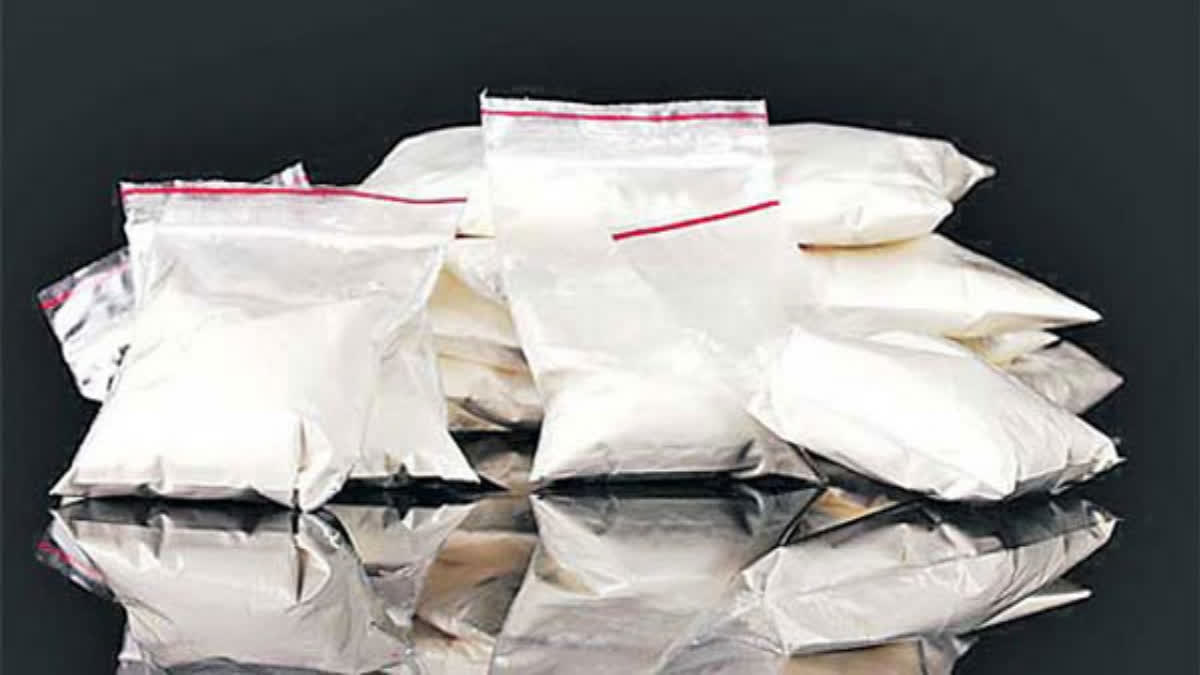New Delhi: The International Narcotics Control Board (INCB) on Monday said that narco-terrorism appears to be an increasing problem in the South Asia region, and investigations have indicated that proceeds of drug trafficking are increasingly being used to fund terrorism, support armed groups, and instigate political violence.
The revelation comes at a time when security agencies in India have expressed serious concern over the growing menace of narco-terrorism. The INCB report released in New Delhi has claimed that opium continues to be illicitly cultivated in India, primarily in the northeastern States. It said that in the period 2020-21, authorities in India reported the eradication of about 4,400 ha of illicitly cultivated opium poppy.
“Most of the heroin found in South Asia in recent years appears to have originated primarily in South-West Asia, having been manufactured from opium produced in Afghanistan. As per United Nation Office on Drugs and Crime, traffickers from Myanmar, which accounted for some 6 percent of global illicit opium production in 2021, regularly supply some of the north eastern States with heroin,” the INCB report for 2023 said.
Established in 1968, INCB is an independent body for the implementation of the United Nations international drug control conventions.
The average annual seizure of heroin in South Asia along the southern route have increased to the extent that the total quantities of heroin and morphine originating in Afghanistan that are seized along that route are now larger than those seized along the northern route, which mainly supplies markets in the Russian Federation, via Central Asia.
In South Asia, methamphetamine manufactured in Afghanistan reaches both India and Sri Lanka. “Most users of amphetamine-type stimulants (mainly methamphetamine) in India are found in the country’s western states, while the prevalence of methamphetamine use is highest in its eastern States, close to Myanmar. India is increasingly being exposed to the expansion of methamphetamine trafficking from both South-West and South-East Asia 9mainly originating in Myanmar), which poses a high risk of significantly increasing the availability and use of the drugs in the country,” the INCB report said.
In 2021, with an estimated population of 11 million opiate users, India accounted for nearly 90 percent of the estimated number of opiate users in South Asia, equivalent to 34 per cent of the total number of opiate users worldwide.
“India also accounted for the largest share (two thirds) of the heroin seized in South Asia in the period 2017-21, followed by Sri Lanka at 23 percent and Bangladesh at 7 percent,” the INCB report said.
Stating that South Asia remains an important transit area for traffickers smuggling illicitly produced opiates from Afghanistan to Europe and North America, the report further said that four coastal States in South Asia, namely India, Bangladesh, Maldives and Sri Lanka as well as Pakistan, are exposed to trafficking because of maritime trafficking routes that cross the Indian Ocean. India, in particular, has noted an intensification of trafficking in opiates originating in Afghanistan and trafficked eastward, along the southern route.
The INCB report has also expressed concern over the latest modus operandi being adopted by the drug traffickers.
“It appears that the domestic cocaine market in India is usually supplied by small shipments. While amounts of cocaine seized in South Asia are typically small, a change in the methods of cocaine trafficking has been observed. In 2020, the restrictions on international air travel may have spurred an increase in the use of mail services, which accounted for more than one third of inbound cocaine consignments by weight. In 2021, sea transport was the predominant mode of transport used to traffic cocaine into India, accounting for 95 percent of inbound cocaine seizures in terms of weight,” the INCB report stated.
Read More



